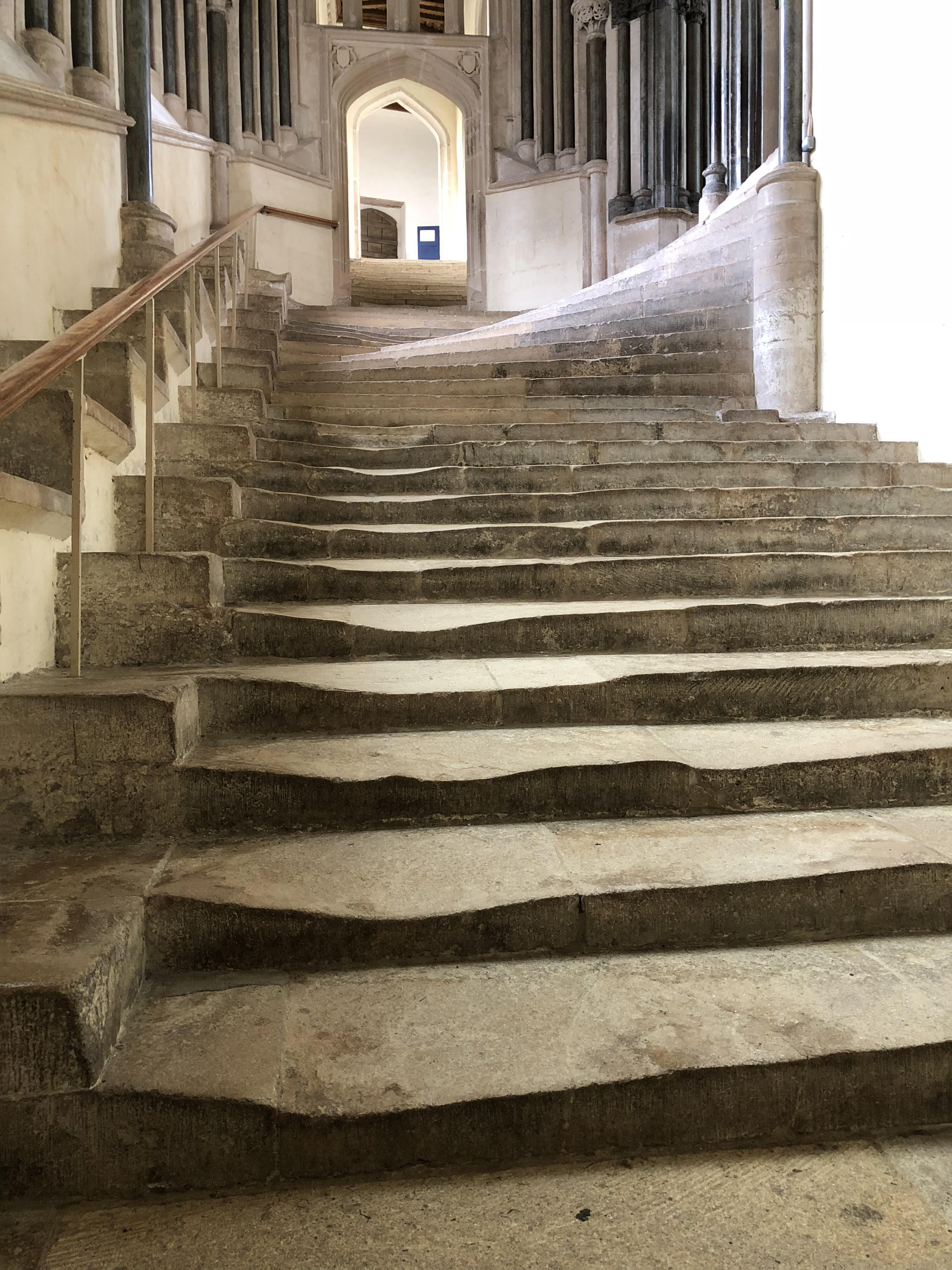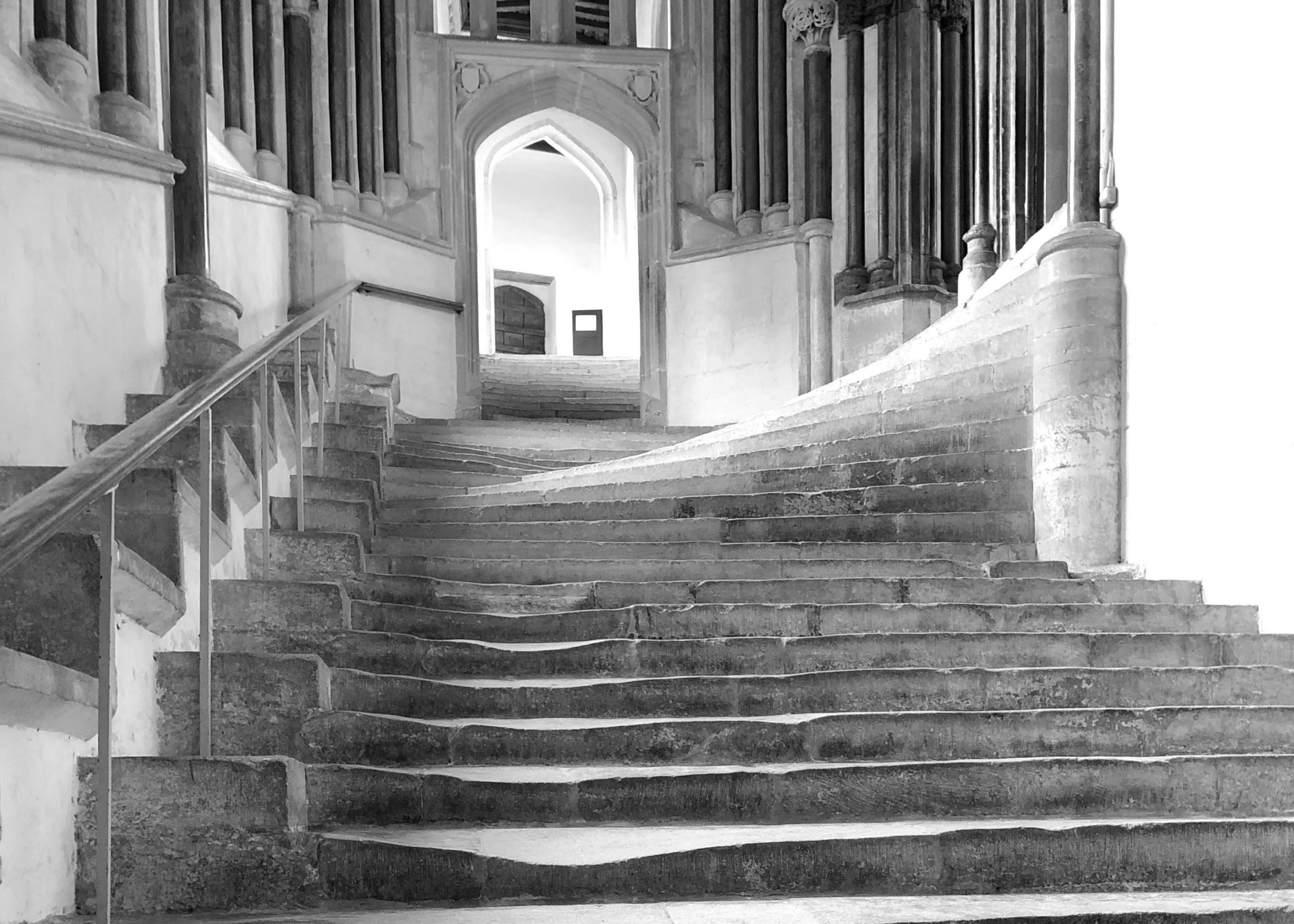A few days ago I escaped the metropolis and headed for an impromptu but long desired trip to the West Country. I knew little of my destination except that there was a particular flight of stairs, that I knew only from a black and white photo, that seemed to be very well worth the time and the journey. Indeed these steps to heaven had inspired the promenade architectural of a house I once designed overlooking the Bristol estuary, sadly, at least for me and I like to think the client, it remains unbuilt. Anyway for an architect schooled in the life of physical experience and touch, rather than reliance on the rich but unedited imagery of the internet, I saw this trip as validating the idea for use elsewhere.
The city did not disappoint. I travelled hopefully and found in defiance of the old adage, that it was in fact much better to arrive. I drove swiftly straight to the city’s two squares, one a dipping formal lawn the other an idiosyncratic yet most legible street expanded to accommodate an ancient market. For the city, as all small cities should, began as swiftly as it ended, with none of the tedium of urban sprawl or fashionable edge lands. As a result the populace, indigenous and visitors alike ensured that the busy looped high street was alive and all seemed to enjoy the civilising effect of chance and courteous encounter.
The West front of the Cathedral was magnificently distinguished by it’s Purbeck stone columns that framed the many fine carved stone figure that were stacked, like a very refined cabinet of curiosities, from the first floor to the sky. Only the two figures accessible above the main doors had been defaced (literarily) by Cromwell and the puritans of his aspiring Commonwealth. Perhaps, in the race to spread the excesses of their particular brand of democracy (that all too soon degenerated into corrupted absolutism and pious misery) on the the greater populace elsewhere.
Beyond its urban and aesthetic majesty the cathedral was an essay in the long established sequence of crisis demanding innovation and tolerance both dimensionally and culturally. Two hundred years after completion, the weight of the great tower started to cause the collapse of the nave. Without resort to lawyers and the retribution enabled by warranties, the stonemasons were called back and invented the scissor arch which righted the wrong and established a uniquely brilliant structural innovation. If the burghers of Pisa had been an able to call upon such brilliant thinking their city, like this one, would still be a small unfashionable backwater!
History is defined by people as well as the architectural marks they leave. And in this small city, these marks are well celebrated. Just off the green there is a plaque celebrating the home of ‘last fighting Tommy – Private Henry John Patch who died aged 111’. The length of the long jump of Mary Bignell Rand, another native of the city, that won get Gold at the Tokyo Olympics, is marked out in the market square (just beyond the Penniless Porch where beggars asked for alms).
Of course history is also brutal. In the Market Square the site of the Market Hall is noted. Not because it was of any great architectural interest but because in 1685 Judge Jeffrey, of the Blooody Assizes, condemned to death 94 of the city’s Catholic population for their support of the Monmouth Rebellion. A timely reminder both of the dangers of harking back to a more civilised past and of the likelihood that the great significance attached to the relatively minor spat between Brexiteers and Remainers is much overblown. After all, in our adolescent era of the internet, all news is not so much fake, as blown up to be of such gargantuan significance that the import of perspective is lost. Which of course left me wandering if our brief dalliance with the EU will be remembered, as are Cromwell’s Commonwealth and the Monmouth Rebellion, as but a passing interlude in our long history?
The stairs that called me to this fascinating city were as great as the image suggested. At least they were from where the photo was taken. I was disappointed however to discover that the Chapter House (situated, uniquely in the cannon of liturgical architecture, at first floor) which they served was but half way up. The conclusion of their magnificent heavenly journal was a closed door. And on descent I discovered that their start was a confusion of a wide stair, a small opening and a blank wall! So the city of Wells and its cathedral was a magnificent and delightful surprise but also a reminder that we are not the first generation to have an uncertain relationship with ideas of import, of image and of substance.








